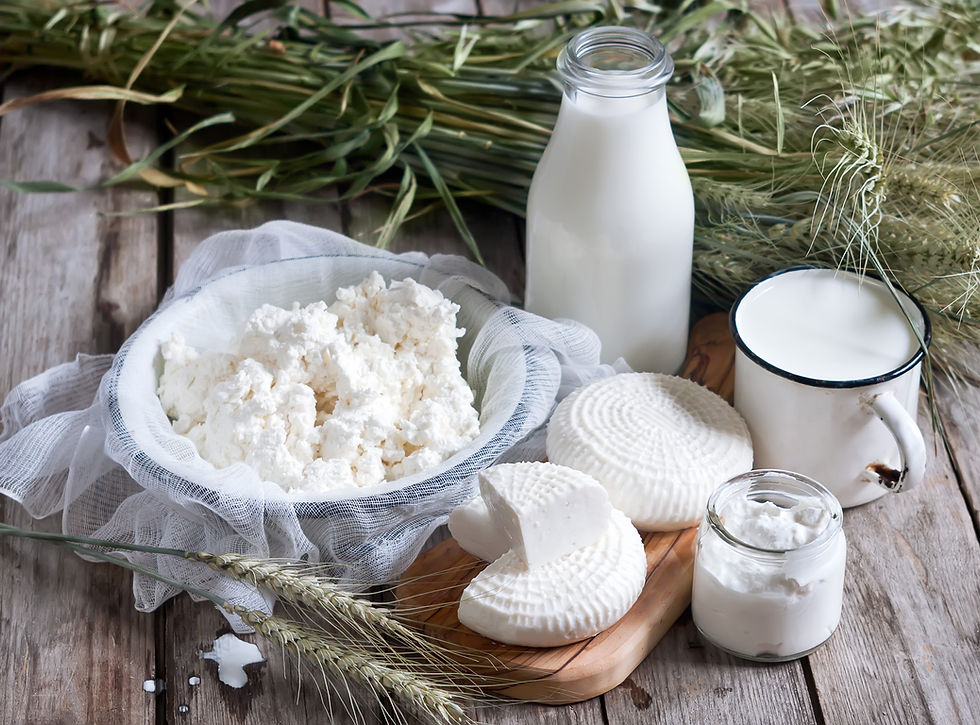Vitamin D: Are you getting enough sunshine?
- lizapatoux
- Jul 15
- 3 min read
Insights from Professor Sue Lanham-New, Head of the Department of Nutritional Sciences, University of Surrey
Vitamin D has been in the spotlight since Covid because of its role in immunity, as well as supporting our energy levels, bone strength and overall wellbeing. However in recent years there has been alarming misinformation circulating on the daily levels of Vitamin D we need.
At the recent weekender for University of Surrey alumni, Professor Sue Lanham-New, international expert in human nutrition and advisor to the UK Government on vitamin D during COVID, clarified some of the myths and misconceptions, along with new research and advice on the recommended levels we need.

Let’s start with this: vitamin D isn’t actually a vitamin in the classic sense. It’s a pro-hormone - something our bodies make in response to sunlight. Specifically, to UVB rays at a wavelength of 290–315 nm.
☀️ We Only Make It in Summer
In the UK, we can only synthesise vitamin D from April to September. And even then, only when the sun is high enough in the sky. A quick rule of thumb? If your shadow is longer than your height, you’re not making vitamin D - this typically applies from October to March.
No matter how sunny a winter’s day looks, you won’t make any vitamin D in the UK from sunlight alone during those months.
From Sunlight to Hormone: How It Works
Here’s the journey:
UVB rays hit your skin.
Your body converts a cholesterol precursor into pre-vitamin D₃, then into vitamin D₃ (cholecalciferol).
Your liver and kidneys further convert this into its active hormonal form (calcitriol), which plays a role in bone health, immune function, and more.
🛡️ Is It Possible to Get Too Much?
Yes, but not from the sun. The body is clever: it self-regulates production and stops making more when stores are full.
Overdosing is only a risk via excessive supplements (not possible from food or sun). During the COVID pandemic, some influencers promoted dangerously high doses - up to 58,000 IU daily. In reality, UK and international guidance is clear:
✅ Recommended daily intake (UK): 10 micrograms/day (400 IU)
🚫 Tolerable upper limit: 100 micrograms/day (4,000 IU)
Above this, long-term, you risk toxicity (hypercalcaemia, nausea, kidney damage). But under the limit, it’s considered safe and necessary for most people.
In winter, supplements are essential
Unlike other nutrients, vitamin D isn’t stored in your blood, but in your body fat and liver - so you can build some reserves. However, by late winter, those stores typically run low.
That’s why Public Health England advises everyone over 4 years old to take a daily 10μg supplement from October to March, regardless of diet or summer sun exposure, with some vulnerable groups needing year-round supplementation.
The Vitamin D legacy
Vitamin D’s role in bone health is historic. Dr Dame Harriette Chick showed that cod liver oil prevented rickets in children during winter. Today, milder vitamin D deficiency, known as osteomalacia, still causes fatigue, weakness and low mood.
According to NICE, an estimated £100 million per year is spent addressing vitamin D deficiency in the UK. Globally, it affects 2 billion people.

🥛 Dairy, doses and dietary gaps
Food alone isn’t enough. Vitamin D occurs in small amounts in oily fish, eggs, fortified cereals and dairy - but sunlight remains the main source.
Professor Lanham-New also highlighted:
A potential link between vitamin D and iron uptake, particularly relevant given low iron intake in UK teenagers.
Ongoing research into fortifying tomatoes with vitamin D to expand food-based sources.
The importance of calcium - especially for bones. UK adults should aim for 700mg per day, ideally from 2–3 daily servings of dairy or calcium-rich foods.
Summer tips for topping up your Vitamin D levels
To build up reserves before winter:
Aim for 15–20 minutes of sun exposure between 11am–3pm, on arms, face, and hands, without sunscreen (before applying protection if staying out longer).
Glass blocks UVB, so sitting indoors by a sunny window won’t help.
Focus on daily, moderate exposure rather than intense tanning sessions.
What this means
Vitamin D isn’t a “nice to have”, it’s a necessity. Especially for immune resilience, energy, bone strength, and overall wellbeing.
So this summer, make it a daily ritual to get outside, and from autumn onwards, take a10μg supplement. Because no matter how bright winter feels, the sunshine at that time of year alone won’t be enough. ☀️ Want to dive deeper into how sunlight shapes more than just Vitamin D?
Read my previous article: Resetting Our Daily Rhythms for Better Living.
It explores the science of circadian rhythms and practical ways to work with your body clock for better energy, focus, and wellbeing.


